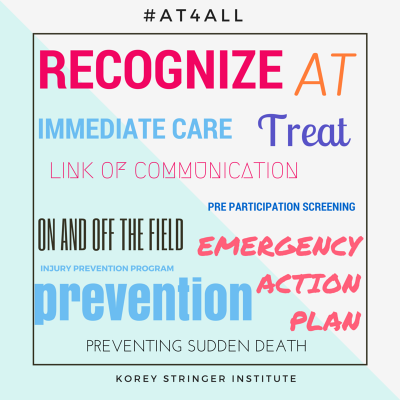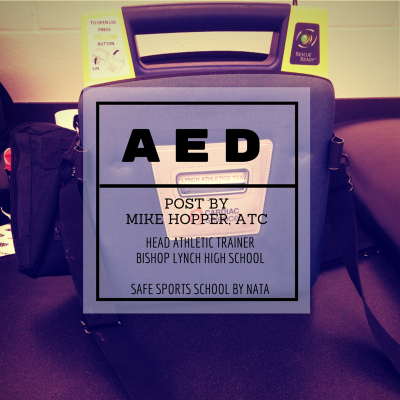By Rachel VanScoy, Assistant Director of Sports Safety Policies
Athletic Trainers are health care professionals who work under the direction of a licensed physician and who specialize in the prevention, recognition, emergency care, treatment, and rehabilitation of sports related injuries. A recent study reported that only 37% of high schools in the United States provide full-time athletic training services.1 Seventy of the public secondary schools acknowledge the importance of athletic training services and provide some level of medical coverage.1 With the increasing number of sports participation and sports related injuries in the high school setting, it is essential that appropriate medical coverage is available. It is important to understand what services and coverage athletic trainers’ provide.
Athletic trainers do not just provide “coverage” during sporting events but provide quality health care to active individuals on and off the field. During emergencies, athletic trainers are onsite to provide immediate care to potentially life-threatening conditions and are trained to provide prompt treatment to help prevent sudden death (i.e., sudden cardiac arrest, exertional heat stroke). Furthermore, athletic trainers provide a link of communication between physicians, coaches, parents, and school nurses. Care of an athlete not only includes physical care but also psychosocial care. A safe environment is created which can result in an athlete confiding in the athletic trainer. Athlete trainers are trained to recognize potential problems (i.e., eating disorders) and can refer to the appropriate medical or professional services.
Additionally, athletic trainers work towards the prevention of injuries and sudden death. Before participation, athletes are screened using medical questionaries’ and preparticipation physical examinations. Athletic trainers are trained to identify potential risk factors and can make appropriate referrals for further screening. The preparticipation screening also allows athletic trainers to identify at risk individuals (i.e., Sickle cell trait, asthma, diabetes). Risk mitigation can be accomplished though educating parents, coaches, athletes, and administrators, as well as, through injury prevention programs. Off the field athletic trainers develop, practice and implement Emergency Action Plans (EAPS) and Policy, and Procedure manuals. A few examples of the policies that athletic trainers develop are heat acclimatization, concussion, lightning, hydration, and environmental (i.e., cold and hot weather) policies. Athletic trainers are responsible for ensuring policies are implemented and followed.
Athletic trainers provide on and off field services to continually maintain health and safety in sports. Described above are just a few of the many services athletic trainers provide at the high school level. For more information, visit the National Athletic Trainers’ Association (NATA) webpage for the Secondary School Setting.
References
- Pryor RR, Casa DJ, Vandermark LW, et al. Athletic Training Services in Public Secondary Schools: A Benchmark Study. Journal of Athletic Training. 2015;50(2):156-162. doi:10.4085/1062-6050-50.2.03.



